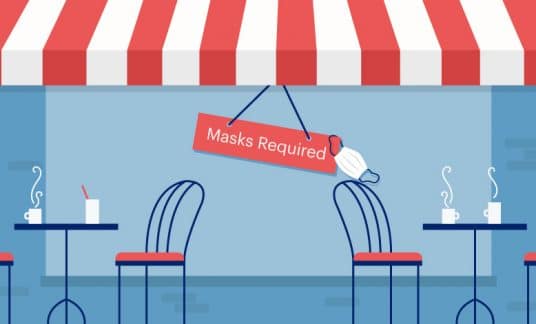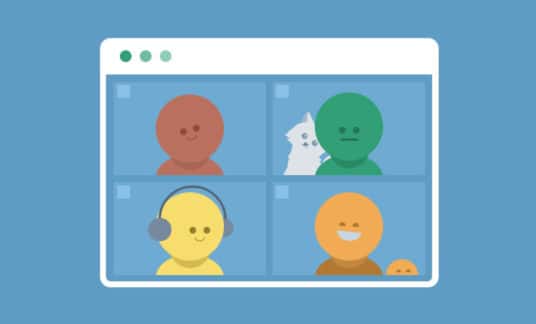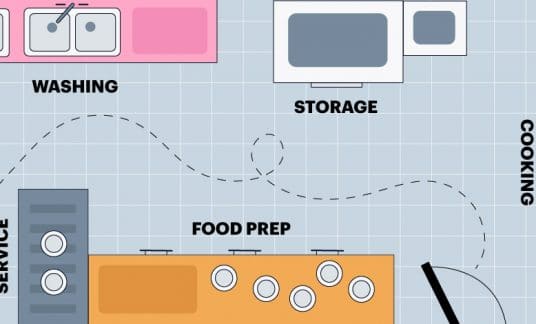The first sale to a new client lays the foundation for many more transactions. But selling additional products to existing customers isn’t a given. It takes work. Here’s how to sell more to existing customers.
Take these steps to develop long-term relationships and turn customers into repeat buyers.
1. Assess Your Customer Retention Strategy
According to Deloitte, customer churn rates can be as high as 30% per year “in some global markets.” Before you can make improvements, you need to know where you stand with your customers.
Learn how to sell more to existing customers by tracking metrics, such as:
- Customer retention rate: The number of customers, expressed as a percentage, that are still customers at the end of a given period.
- Customer churn rate: The percentage of clients that stopped buying from your company during a specific timeframe.
- Repeat purchase rate: The percentage of existing customers who’ve completed more than one transaction with your business.
- Average order value (AOV): The AOV calculates the average amount of money your customers spend per purchase.
- Purchase frequency: This metric looks at how often customers buy from your company during a specified timeframe.
2. Focus on the Customer Experience
A poor experience during or after a sale reduces the probability of a repeat purchase. Qualtrics XM Institute’s “Q2 2020 U.S. Consumer Benchmark Study” finds “on average, 42% of consumers cut their spending after having a bad experience with a company.”
As a result, businesses across the 20 surveyed industries “stand to lose nearly 4% of their revenue from delivering bad experiences to their customers.”
In addition, Northridge Group’s “State of Customer Service Experience” notes “73% of customers will consider switching to a competitor after one negative customer service experience.”
Concentrate on making the customer journey effortless, from purchasing from your company to finding help after the sale.
According to Northridge Group, the “top negative customer service experiences” are:
- Long wait times to reach a customer service agent
- Difficulty locating answers on a company website
- Problems using the company’s phone system or getting a live person on the line
- Trouble “accessing live or human customer support”
- Being asked to give the same information several times while requesting help
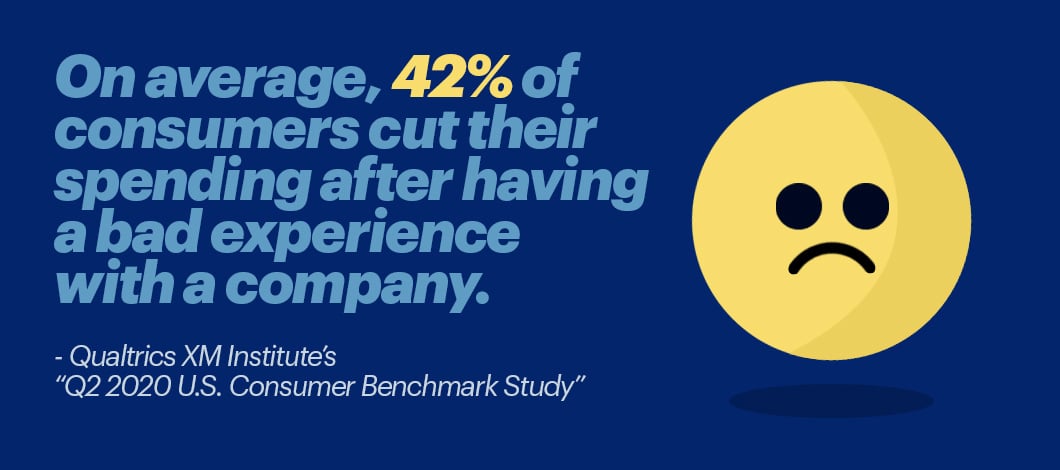
3. Review Your Follow-Up Process
Following up with your clients is essential to keeping existing customers satisfied. If you don’t check in with them, it isn’t easy to measure their experience. Not following up is like leaving money on the table.
The SuperOffice Customer Service Benchmark report finds “62% of companies do not respond to customer service emails, and 97% of companies do not send a follow-up email to customers to see if they are satisfied with the response.”
Evaluate your process by first defining the steps taken after a consumer makes a purchase, reaches out for customer service or interacts with your brand in any other manner after the sale.
Look at the response rates to follow-up efforts, and if they’re low, look for ways to improve your process, such as:
- Keep your follow-up messages concise and personalized to the situation
- Use a straightforward, nonsales-y email subject line
- Follow-up with your customers promptly
- Check-in with clients using their preferred communication platform
- Insert a call-to-action (CTA) in your follow-up correspondence
4. Alert Customers to New Products and Promotions
Your point-of-sale (POS) and customer relationship management (CRM) data provide details about your clients and their purchase history. Use this information to increase revenue from existing customers.
Avoid flooding their inbox with impersonal messages touting your latest 15% off coupon that anyone can find a code for online.
Instead, send personalized and relevant messages when a product related to a previous purchase goes on sale. Plus, share details about new items that may complement a prior purchase.
Get their attention with exclusive offers, such as pre-sale events or a guaranteed lowest price for pre-orders.
5. Develop a Customer Loyalty Program
The importance of customer loyalty to a business is significant. According to Smile.io’s “The True Profitability of Repeat Customers Online” report, “repeat and loyal customers” account for 8% of a company’s website traffic, but “they represent 41% of a site’s revenue.”
However, customers are fickle, and their allegiance to your brand isn’t a given. Use a loyalty program to improve experiences and gauge engagement levels.
Wirecard’s “Consumer Incentives 2019: The Digital Transformation of Rewards, Rebates and Loyalty” finds, “75% of customers said they were likely to make another purchase after receiving an incentive.”
Loyalty incentives also fuel engagement across digital channels, with Wirecard showing that “after a positive rewards experience,” consumers:
- Follow the company on social media
- Subscribe to a brand’s newsletter
- Explore content provided by the business
- Go to the company’s retail stores
- Attend events hosted by the brand
6. Tailor Your Marketing to Existing Customers
Marketing to existing customers should differ from your acquisition strategy. Consumers don’t want their inbox spammed with offers for a product they already purchased or repetitive social media ads.
The Salesforce “State of the Connected Customer, 4th Edition” report finds “66% of customers expect companies to understand their unique needs and expectations.” Yet, “34% of companies generally treat customers as unique individuals.”
Improve experiences for established customers using a CRM system and well-developed customer profiles.
Both give insights into customer behavior at all touchpoints. Your data also helps sales and marketing teams identify upselling and cross-selling opportunities.
Create profiles by:
- Reviewing client attributes, such as geographic data and demographics
- Understanding new problems that result in unmet needs
- Using social listening tools to learn what customers say and do on social media
- Reading trade publications and marketing reports
7. Ask Clients for Their Opinion
Your follow-up process may include post-sale surveys or a request for a customer review, but don’t stop there. Increase sales from existing customers by showing you value their opinions.
Do they want different payment or delivery options? Would they be interested in a new product or service? Engage with your clients across multiple channels to discover (and ask for) their thoughts.
Conduct market research using:
- Social media polls
- Net promoter score (NPS) programs
- Blog comments
- Customer reviews
- Email responses
- Customer service trends
- Customer surveys
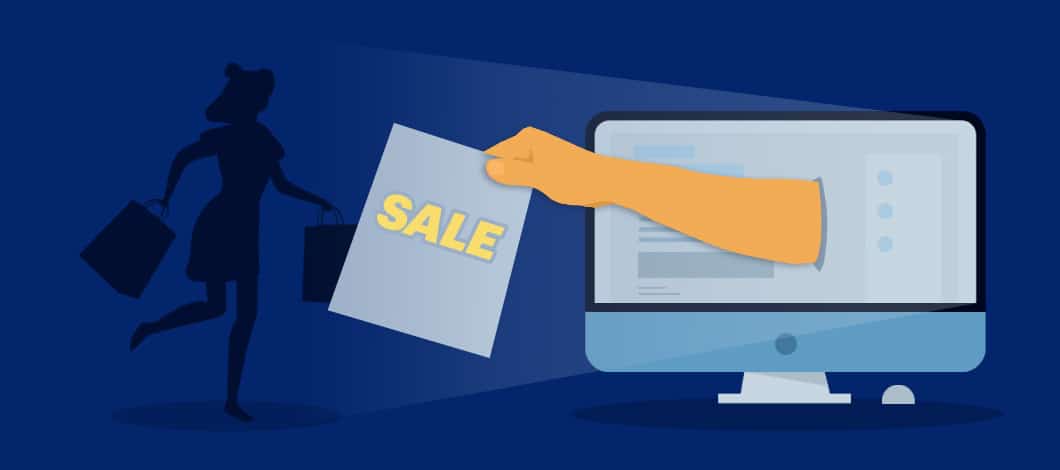
8. Build Relationships With Your Clients
Go beyond managing existing customers by developing a relationship with them. Doing so involves interacting with your clients personally, such as having a conversation on social media or sharing a story that resonates with them.
Relationship selling and marketing is an online process that’s part of a robust customer retention strategy. It creates an emotional connection and keeps your business top-of-mind.
Ways to build relationships with your customers include:
- Read and reply to comments on your social media advertisements, reviews and posts
- Create a community around your brand using a Facebook group
- Send personal messages for birthdays, holidays or even the death of a pet
- Share your brand’s story and encourage customers to share their own story
9. Leverage Channels Preferred by Customers
Salesforce’s “State of the Connected Customer” finds, “74% of customers said they “used multiple channels to start and complete a transaction.” They “turn to an average of 9 channels to browse inventory, seek advice and make purchases.”
But the methods used may differ among various demographics. For instance, if you’re catering to busy parents, offering only phone customer support may be a turnoff. In contrast, grandparents shopping for the holidays may not use text messaging or online chat.
However, generalizations about your market don’t always work. That’s why it’s crucial to research and ask what methods your customers prefer.
Once you know how to reach them, note it on their account, and invest in improving those touchpoints.
The top 10 preferred channels ranked by popularity, according to Salesforce, are:
- Phone
- In person
- Online chat
- Mobile apps
- Messaging apps
- Texting
- Online portals
- Video chat
- Social media
Delight Existing Customers and Continually Earn Their Loyalty
Get your customers emotionally invested in your brand and encourage them to buy from your company again by building relationships and creating excellent experiences.
Above all, you can sell more to existing customers by being consistent, authentic and transparent.



